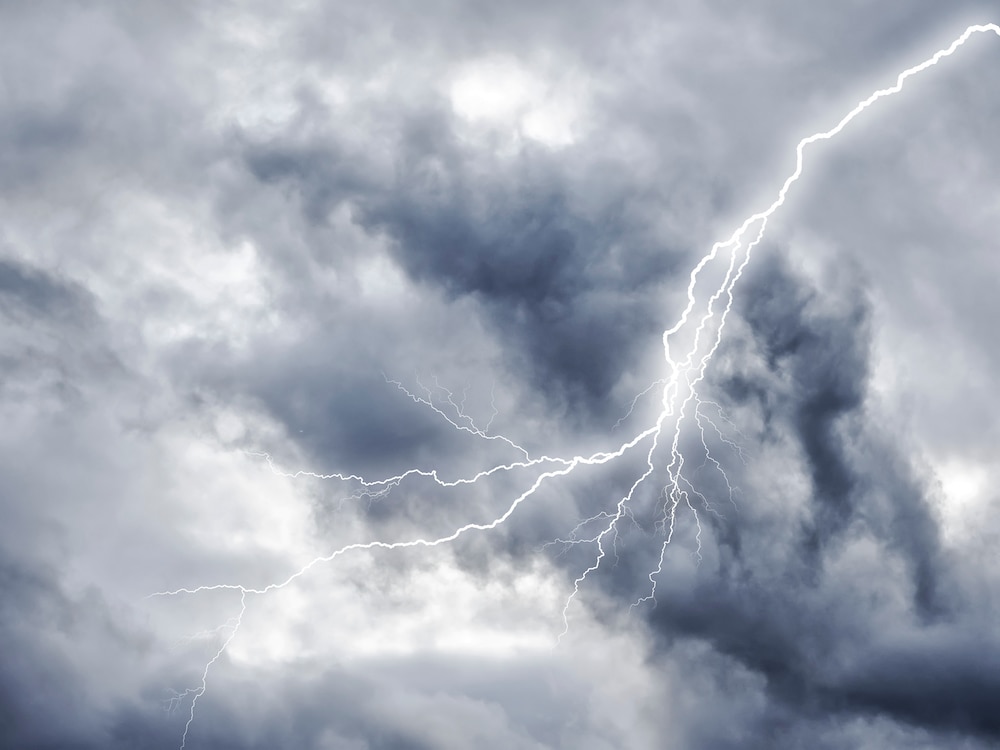Create a free profile to get unlimited access to exclusive videos, sweepstakes, and more!
Cataclysmic rainstorms drowned ancient Earth - could global warming bring them back?
Hundreds of millions of years ago, Earth heated up so much that it experienced devastating rain.

Even a few degrees could mean the difference between survival and devastation. Just ask the ancient Egyptians, then go further back and ask a trilobite.
Around 10,000 years ago, what is is now part of the Sahara desert was once a fertile land fed by rivers that overflowed and forced an entire population to flee. But that's nothing compared to what is thought to have happened hundreds of millions of years ago. There were periods when Earth’s temperatures then would exceed today’s by up to 30 degrees Fahrenheit, and that unleashed massive, violent and seemingly neverending rainstorms that flooded the entire planet.
Hothouse Earth has been something of a mystery until now. Researcher Jacob Seeley of Harvard University led a study, recently published in Nature, that showed what a hell planet it must have been. There could be up to a foot of rain every few hours when the heat became extreme. The planet would have a chance to breathe during dry periods, and then the temperatures would turn up again, with floods that easily could have wiped out humans if we had existed.
“The episodic deluge cycle was unexpected mainly because it's not how the hydrological cycle works on Earth today,” Seeley told SYFY WIRE. “Today, water is added by evaporation at the same rate as it's removed by rain. The episodic deluge cycle kept dumping huge amounts of rain over and over.”
Seeley looks at this as all the water vapor in the atmosphere as if it was contained in a cosmic bucket. In the tropics, it’s always raining — but not that kind of rain. Think of it like a bucket being filled by a hose but leaking from the bottom, so the amount of water remains steady. Hothouse Earth was experiencing something more like a bucket being filled all the way up and completely dumped out only for the same thing to keep repeating itself. That will happen when CO2 emissions or solar radiation up the sea surface temperature to 150 degrees Fahrenheit.
Earth’s oceans became more like enormous hot tubs in Seeley’s model, except hotter (your average hot tub only hits about 100 degrees or you’d be scalded alive). Sunlight hitting the planet would only need to be 10 percent brighter to do this, which is why we need to watch out for the ozone layer, which emissions of CO2 and other gases are eating away at. CO2 emissions on their own would need to be 64 times what they are now in order to recreate the conditions of Hothouse Earth. It doesn’t mean you should start spraying aerosols everywhere.
Before the planet got hot and bothered, it was actually frozen over in a phenomenon known as Snowball Earth, during which atmospheric carbon dioxide in accumulated. The cataclysmic aftermath of these CO2 accumulations sent climates reeling from one extreme to the other. Near the surface, air was intensely heated by water vapor in the atmosphere that had absorbed sunlight. This water vapor formed an inhibition layer, which prevented clouds formed by convection (warmer air rising) from rising into the atmosphere and forming rainclouds.
“Those postglacial hothouses are probably the warmest climates that have existed on Earth since life developed, and our results offer a glimpse of how the atmosphere may have behaved in those conditions,” said Seeley.
While so much evaporation stuck was near the surface, clouds were forming from heat that escaped into the upper atmosphere, and for several days, they would shed rain for nothing. It just evaporated before ever landing on the surface. Then those clouds got impatient. Rainstorms in the upper atmosphere cooled the inhibition layer enough to punch through it, unleashing rainfall so immense that in one simulation, more precipitation fell in six hours than what you’d get from a tropical cyclone whirling and swirling with rain for several days.
After the rain finally stopped, the process would just recharge itself. Seeley thinks this is probably going to end up happening far in the future no matter what, because the sun gets 10 percent brighter every billion years. Sometimes it doesn’t even need that. The most recent hothouse period was 50 million years ago. However, he does fear that anthropogenic climate change could cause disaster much sooner.
“If we continue on a high-emissions trajectory for just a few centuries, humans could certainly warm the planet by 20 degrees Fahrenheit,” he said. “That's especially true if "carbon cycle feedbacks" such as permafrost thaw turn out to be bigger threats than we currently realize.”
These predictions don’t only warn us of impending doom, though they should. Conditions on ancient Earth could also be used to predict the temperatures of Earthlike exoplanets, especially those that are so many light years away, we are observing them as they were when our own planet was a snowball or a hothouse.
“For future observations of exoplanet atmospheres, it's crucial to have a theory for how clouds and atmospheric circulations might work on exoplanets,” said Seeley. “Our results are a step in that direction.”


























